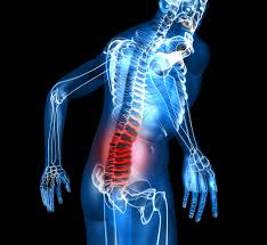Muscoskeletal Disorders (MSD)
|
MSDs are conditions affecting the musculoskeletal system and can present in the tendons, muscles, joints, blood vessels and/or nerves of the limbs and back. Symptoms may include pain, discomfort, numbness and tingling in the affected area and can differ in severity from mild and periodic to severe, chronic and debilitating conditions. MSDs can be multifactorial in nature. MSDs are a massive drain on the resources of an employer, including costs such as sick pay, lost productivity, retraining, legal and injury benefit. However, they also represent a significant opportunity for cost reduction, since they are manageable and can be preventable. |
 |
Common Failings in the Management of MSD’s
- No risk assessment of work activities;
- Lack of safe systems of work;
- Mechanical aids were not provided and maintained;
- Adequate training was not provided; and
- No evidence of work supervision.
In quarries there is also evidence of the risks of MSD’s through operation of vehicles as a result of whole body vibration and from climbing in and out of vehicles or up and down ladders and walkways.
Risk Factors
- Frequency and repetition of movement – includes rapid or prolonged movements of the upper limb(s). Work is repetitive when it requires the same muscle groups to be used repeatedly during the working day or movements are performed frequently for prolonged periods. Such repetition may not allow sufficient time for recovery and can cause muscle fatigue, which may result in increased risk of Upper limb disorders.
- Force Applied – includes the handling of heavy objects, fast movements when performing a task and the force of gripping products or tools. The level of force that is generated by the muscles is affected by a number of factors, including working postures, the size of objects handled and the speed of movement. Use of excessive force can lead to fatigue and, over a sustained period of time, to Upper limb disorders.
- Awkward postures – include awkward and prolonged postures of the head, neck, back, arms and wrists. Certain jobs may require an employee to assume a variety of awkward postures, including fixed or constrained body positions, that cause significant biomechanical stress to the joints of the upper limbs and surrounding soft tissues. Such postures may restrict blood flow to the muscles and tendons and cause muscle fatigue, resulting in less opportunity for the muscle to recover.
- Duration of exposure – is the length of time for which the task is performed. It can refer to the number of hours over which the task is performed without a break or in a typical daily shift. It can also include the number of working days for which the task is performed (e.g. 4 hours per day, 5 days per week). Upper limb disorders are cumulative in nature. The length of time or duration of a task can increase the risk of upper limb disorder injury as the upper limb(s) may undertake work for long periods without rest and with insufficient time for muscle recovery, resulting in muscle fatigue.
- Work Environment – should be assessed for risk factors include poor lighting or temperature control. Poor or dim lighting may encourage an employee to adopt a bent neck or poor shoulder postures in order to see their work.
